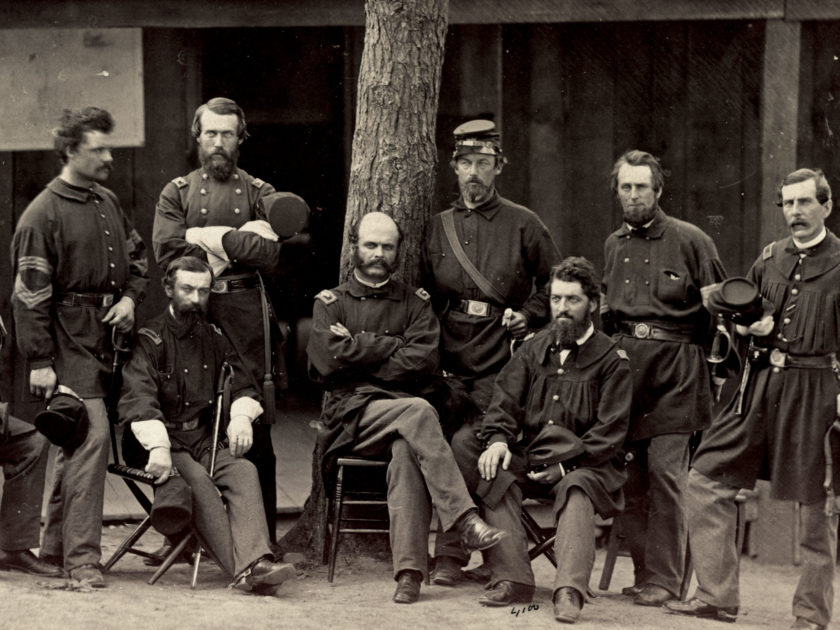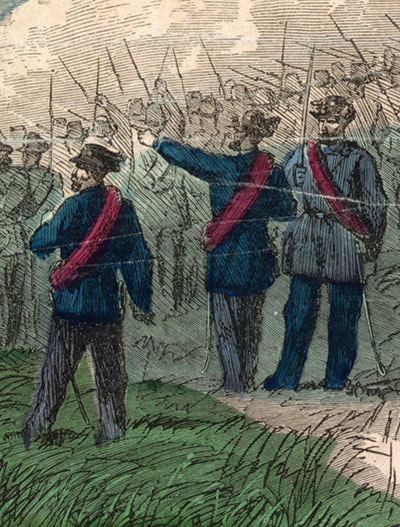
The wild array of uniforms on display in the Union army during the spring of 1861 exuded a vivid patchwork of color and design. The mishmash of state styles included the unique outfit of the 1st Regiment Rhode Island Detached Militia. Dressed in blue pullover blouses, gray trousers and black hats, these New Englanders commanded attention. Also conspicuous was a unique scarlet bedroll. Trimmed in black and slung across the back, it doubled as a poncho thanks to a convenient slit in the center—an idea from their entrepreneurial colonel, West Pointer Ambrose E. Burnside. He is generally credited as the creative force behind the entire uniform.
The men who wore them were as diverse as their uniforms were unique.
“It seemed as though both the artificial and the natural distinctions of society had been, for the time, abrogated, and the barriers broken down in the hour of the nation’s emergency,” the regiment’s chaplain, Rev. Augustus Woodbury, observed. “The inborn humanity of us all stood manifest to the day. Class, caste, sect, party, were all forgotten. Rich and poor, native and foreigner, Protestant and Catholic, Radical and Conservative, Republican and Democrat, alike felt the mighty impulse.”
Woodbury added, “All were there, eager for the opportunities of duty, and ready to imperil life, fortune—everything but honor—in the cause of liberty and law.”
Here, we look upon representative faces of these first responders, revealing their war experiences and document details about their distinctive look.
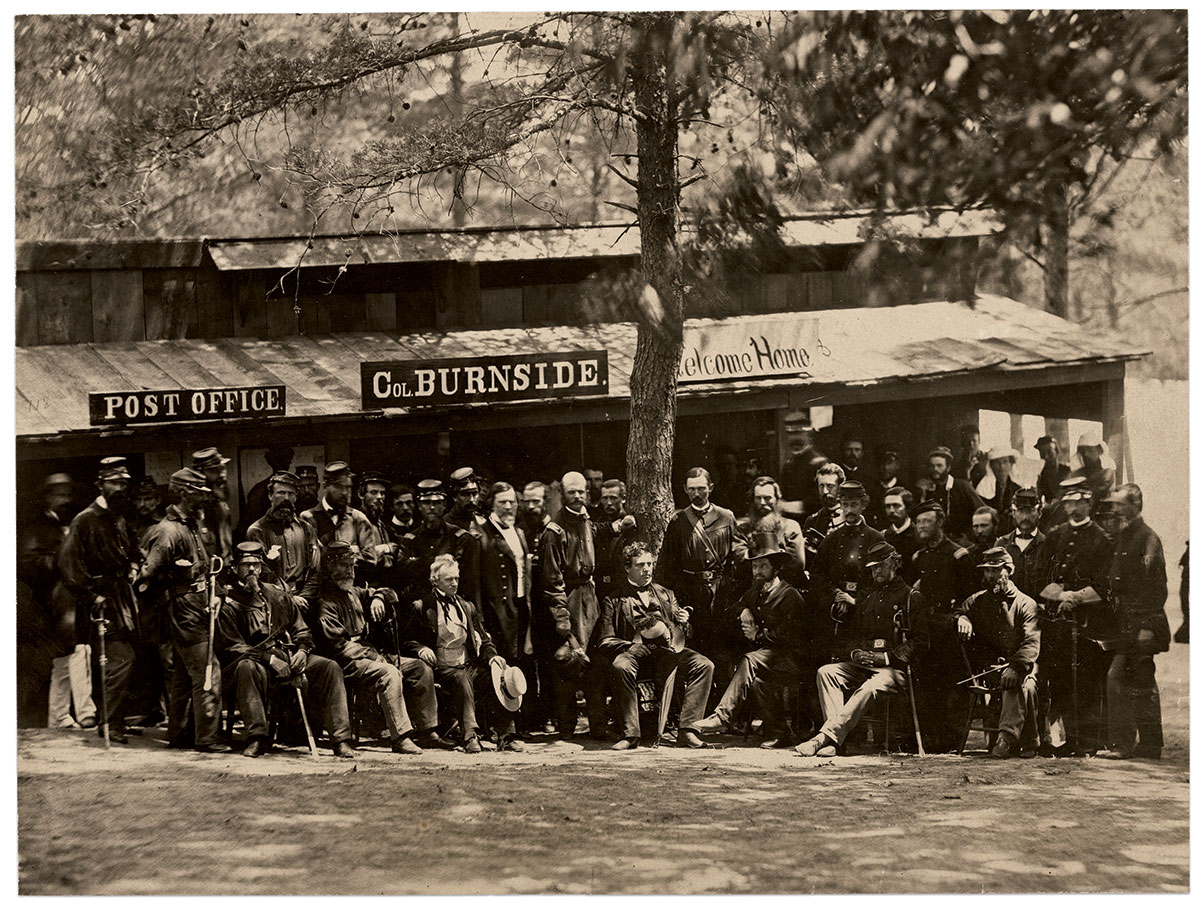
Albumen print possibly by Alexander Gardner of Washington, D.C. National Portrait Gallery, Smithsonian Institution.
Camp Sprague Homecoming
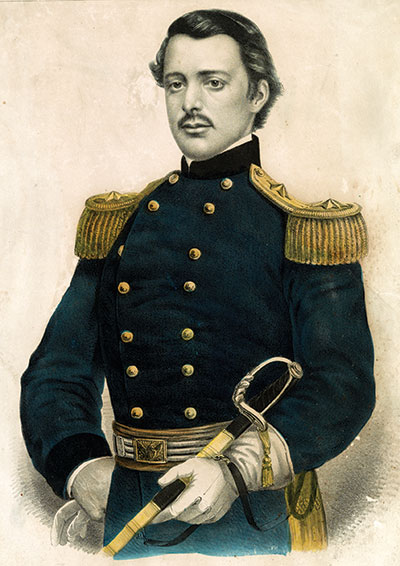
With one hand placed on a tree trunk, Col. Burnside stands at the center of a group of soldiers and civilians at Camp Sprague in northwest Washington. Named for the Rhode Island’s 30-year-old governor, William Sprague, the regiment moved into the camp in early May 1861.
The Rhode Islanders had arrived in town two weeks earlier, on April 20, and occupied temporary quarters in the Patent Office building.
The story behind the “Welcome Home” sign is not known. One explanation holds that old army pals were happy to have Burnside back in uniform for the first time since he had resigned his commission in 1853. Another theory speculates that it was erected by the members of the regiment who built the camp to welcome Burnside and the rest of the Rhode Islanders to their new quarters. If so, the soldiers pictured here may have been the men who performed the actual construction of the buildings.
Note the presence of two enlisted men, standing on the far right, who wear havelock caps. The unique headgear featured long flaps to minimize heat exposure from the rays of the sun. According to the history of the regiment, “The white havelocks, which our friends at home had provided, the red blankets, and the blue blouses formed a good combination of the national colors.”

Albumen print possibly by Alexander Gardner of Washington, D.C. Library of Congress.
The Popular Colonel and His Staff
Col. Ambrose E. Burnside sits with arms folded in the center of officers and non-commissioned officers. He is flanked on the left by his gauntleted major, Joseph P. Balch, and on the right by cap holding Augustus Woodbury, the chaplain of the regiment. In 1862, Woodbury’s A Narrative of the Campaign of the First Rhode Island Regiment was published in Providence. Standing on the far right with cap in hand is Capt. William L. Bowers, the commissary officer.

Carte de visite by Mathew B. Brady of Washington, D.C. Rick Carlile Collection.
Million-Dollar Soldier
The rank and file of the regiment included Moses Brown Jenkins, 26, one of the wealthiest young men in America thanks to a vast inheritance provided by his late father, who made it big in textiles. When news of the attack on Fort Sumter rocked Rhode Island, he had just purchased tickets for a family trip to Europe. Jenkins, a Quaker, promptly tore up the tickets and enlisted. He is pictured here in standard uniform and a non-standard haversack upon which his name is prominently stenciled. Jenkins survived his enlistment in Company C and did not return to the army. He lived until 1895.
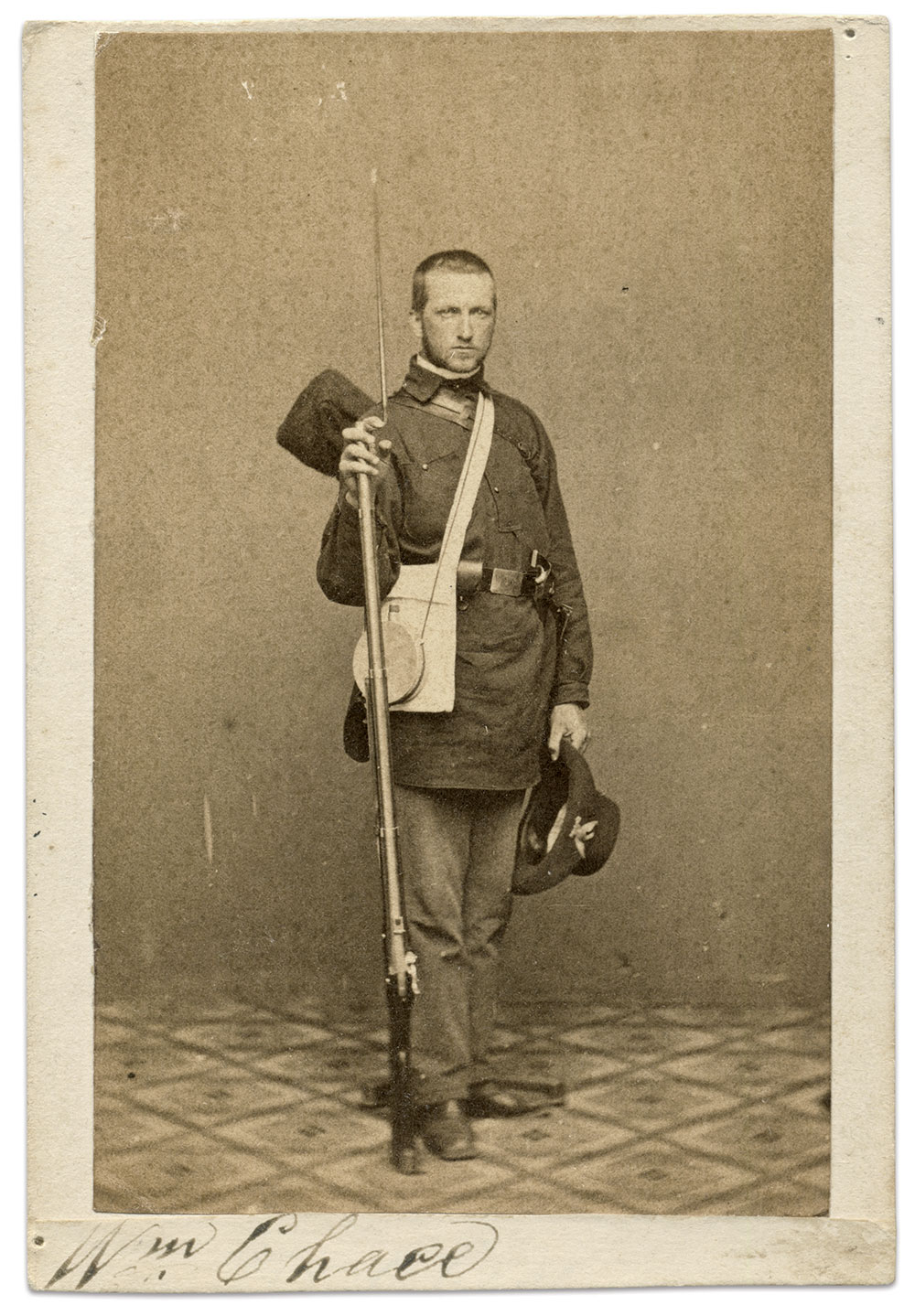
The Burnside Look
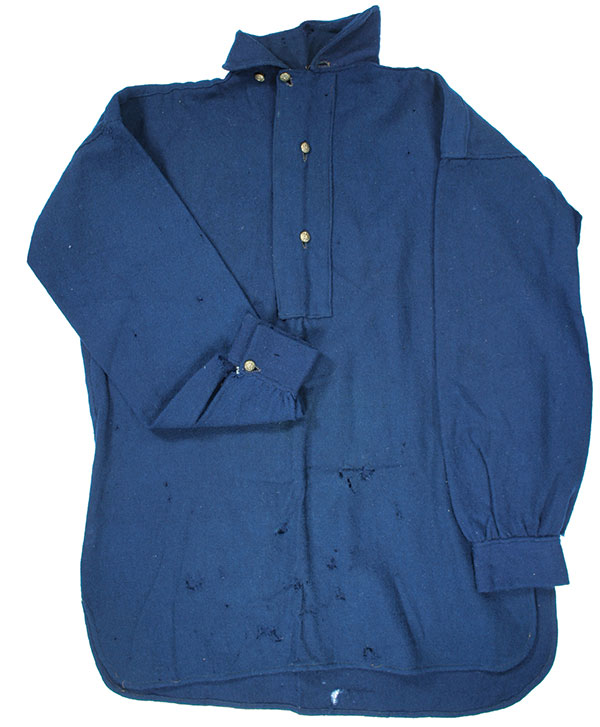
Providence-born William Chace, a private in Company D, wears the blue blouse, which harkens back to Revolutionary War era hunting shirts. According to artist and military historian Alan H. Archambault, it was the result of quick thinking by Ambrose Burnside, who “was faced with outfitting the regiment uniformly in the span of just a few days. His solution to this problem was to design and supervise the manufacture of a uniform, which was simple, practical and easy to produce. The distinctive uniform that many contemporary accounts describe was designed by Burnside based on his experiences in the American West and perhaps his stint as a tailor’s apprentice.” Local women, who set up shop in homes, churches, businesses and elsewhere, produced the uniforms, and worked round the clock to finish the job.
Chace is fully dressed and equipped for campaign, complete with red blanket, haversack, drum-style canteen attached to a thin cord and a small pocket revolver. He grips the muzzle of his U.S. Model 1855 rifle musket. His black hat, turned at an angle, reveals the lining inside. Chace survived his time with the regiment and did not rejoin the army after the expiration of his term of enlistment. He lived until 1908.

Carte de visite attributed to Bundy & Rowell of Providence, R.I. Rick Carlile Collection.
Repelling the Enemy Attack at Bull Run
Joseph Pope Balch, 38, had experience as a militia officer prior to the war. He led the regiment at the Battle of Bull Run in place of Col. Burnside, who commanded the brigade, and Lt. Col. Joseph S. Pitman, who had left the regiment the previous month. Burnside stated in his official Bull Run battle report, “Major Balch, in command, gallantly led the regiment into action, where it performed most effective service in assisting its comrades to repel the attack of the enemy’s forces.”
Balch returned to Providence after the end of his three-month term and resumed his service as an officer in the Rhode Island Militia. He received a brevet rank of brigadier general of volunteers in 1865. He died in 1872.

Carte de visite by Mathew B. Brady of Washington, D.C. Rick Carlile Collection.
A Full Dressed National Cadet
Company A of the regiment was composed of members of a Providence militia company, the National Cadets. Its first lieutenant, Addison Hyde White, was a 30-year-old businessman born in Connecticut. He’s pictured here in officer’s full dress. Of note is his tall-crowned fur felt hat, to which is attached a dark plume. Also of interest is the device on his cap box cover, which may be the state seal or an eagle. The use of this device appears unique to the Cadets. He poses with a holstered revolver and a U.S. Model 1850 sword. White survived his enlistment, returned to Rhode Island, and became an insurance agent. He died in 1894.

Ninth-plate ambrotype by Manchester & Brother of Providence, R.I. National Portrait Gallery, Smithsonian Institution.
Rising Star, Adopted Son of Rhode Island
Born in Indiana and married into a Rhode Island family, Ambrose Everett Burnside was a model soldier, noted a biographer. “Possessing a West Point training, well versed in the art of war, and familiar with the details of army routine, he had a tall and robust frame, buoyancy of manner, and a spirit of perpetual elasticity, with a desire to soften the rigors of martial law. He wore the blue blouse which had been adopted as the uniform of his Rhode Island regiment, with a broad-brimmed Kossuth hat, and when mounted on his favorite horse, ‘Major,’ it was evident that the saddle was to him a familiar seat.”
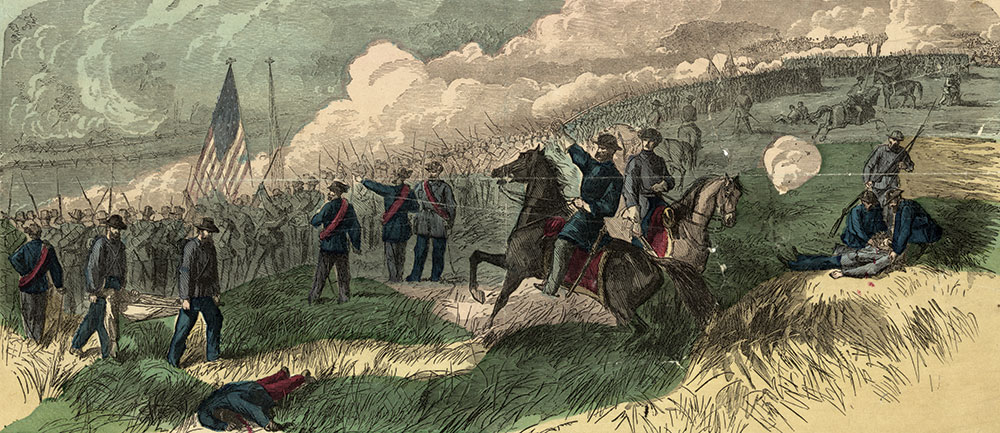
Lithograph by H.H. Lloyd & Co. of New York City. Library of Congress.
The 36-year-old Burnside was a whirlwind of activity from the moment he reported for duty in Providence on April 16, 1861. “He instructed officers and drilled enlisted men; he was quartermaster, commissary, farrier, and surgeon, and his promptness electrified not only the regiment, but the entire population of Rhode Island,” noted the biographer.
“It was his regiment first, himself always last,” another writer observed. “Every thought and every act was for the welfare of his regiment. By day and night, his vigilance secured the comfort and happiness of his command. He marched on foot that he might measure the endurance of his men by his own. He lightened every hardship by sharing it with them. He diminished every danger by his care for their safety. In every encampment, his own quarters were the last to be selected and the late to be prepared.”
Burnside’s star rose despite the debacle at Bull Run and it peaked with his appointment as commander of the Army of the Potomac in November 1862. A month later came the lopsided defeat at Fredericksburg that ultimately cost him command of the army.
Company D, Serious and Playful

Albumen print possibly by Alexander Gardner of Washington, D.C. Library of Congress.
A group from the company strike a seemingly serious pose with pipes and cards to stave off the monotony of life at Camp Sprague.

Albumen print possibly by Alexander Gardner of Washington, D.C. Library of Congress.
Cigars and pipes dominate the playful scene which includes an especially animated pose of the trio of soldiers standing at the corner of the barracks.
Also of note is the presence of African Americans. The two men of color, one pictured in each portrait, may have been employed as servants. The stoic woman staring straight at the camera may have cleaned the barracks.
Company D, and its brother Company C, were originally raised in Providence as the “First Light Infantry.”
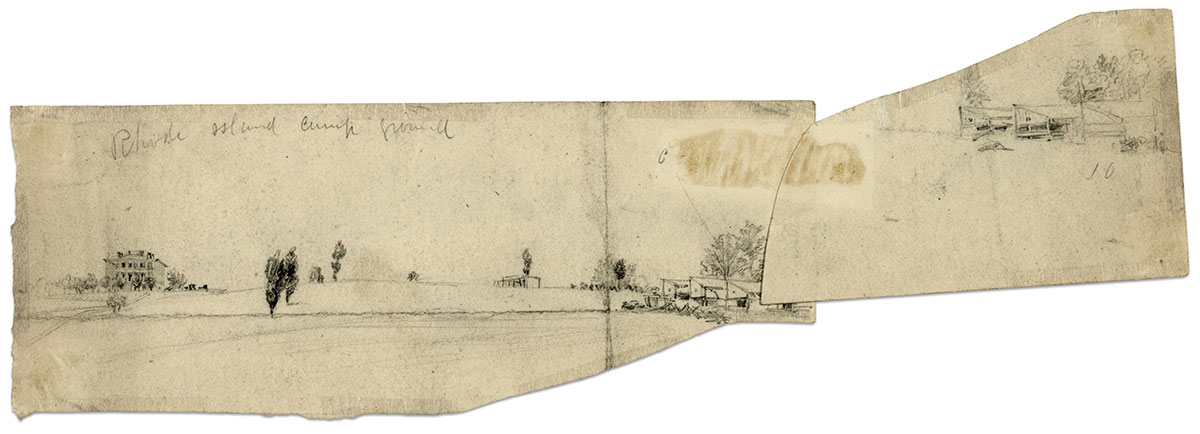
From Private to Brevet Brigadier
For Lewis Richmond, his three months donning the blue blouse marked the beginning of a distinguished military career. After his stint in the 1st, Richmond returned to the army as a captain in the Adjutant General’s Department and member of Burnside’s staff.
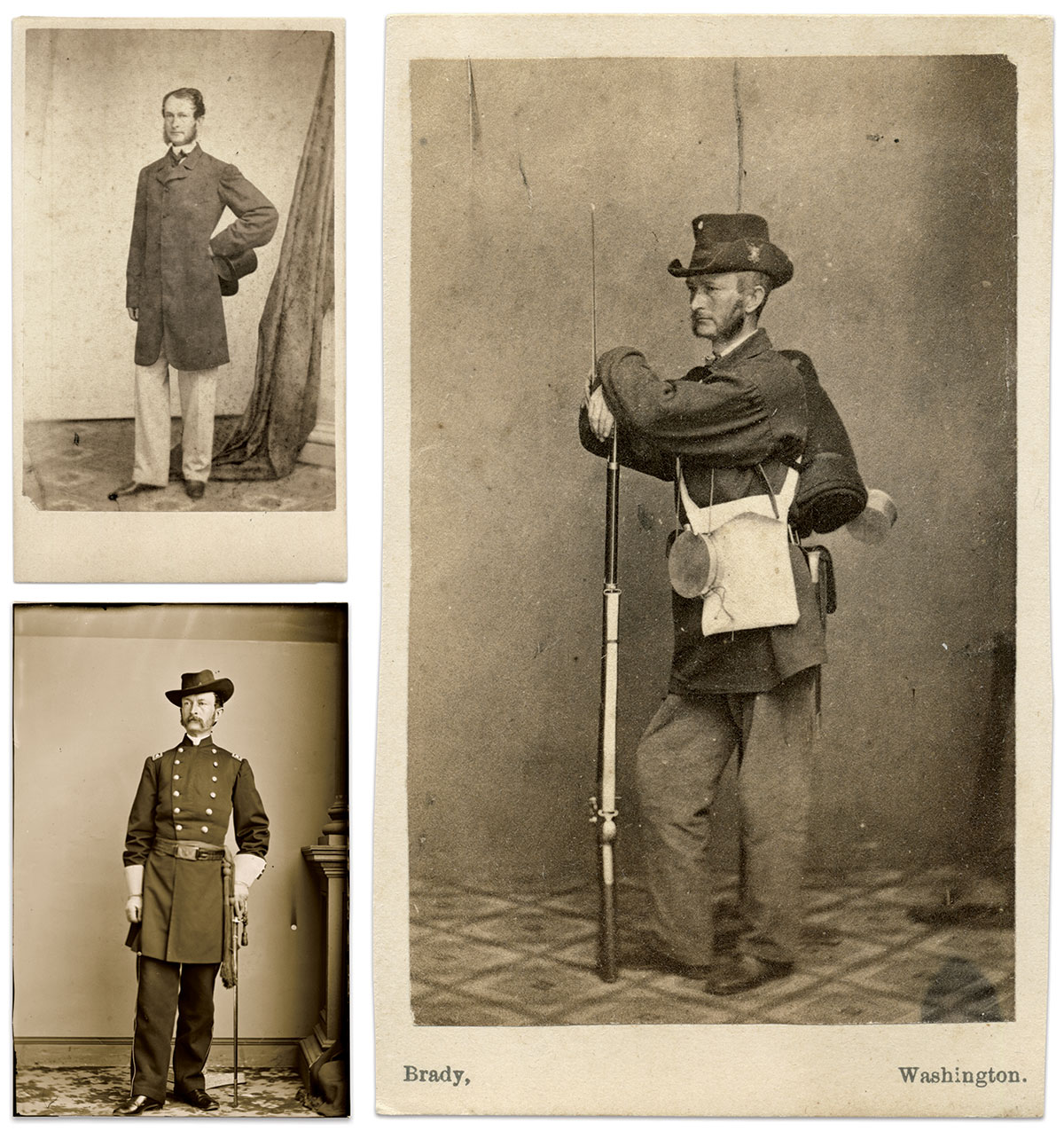
Richmond steadily rose through the ranks to lieutenant colonel, and earned brevets for his service in the campaigns in Eastern Tennessee and Knoxville. He served as a brevet brigadier general of volunteers from the Rapidan River to Petersburg during the Overland Campaign. After the war, he became a successful diplomat in the administrations of four presidents. He died in 1894 of heart disease. His wife and two children predeceased him.
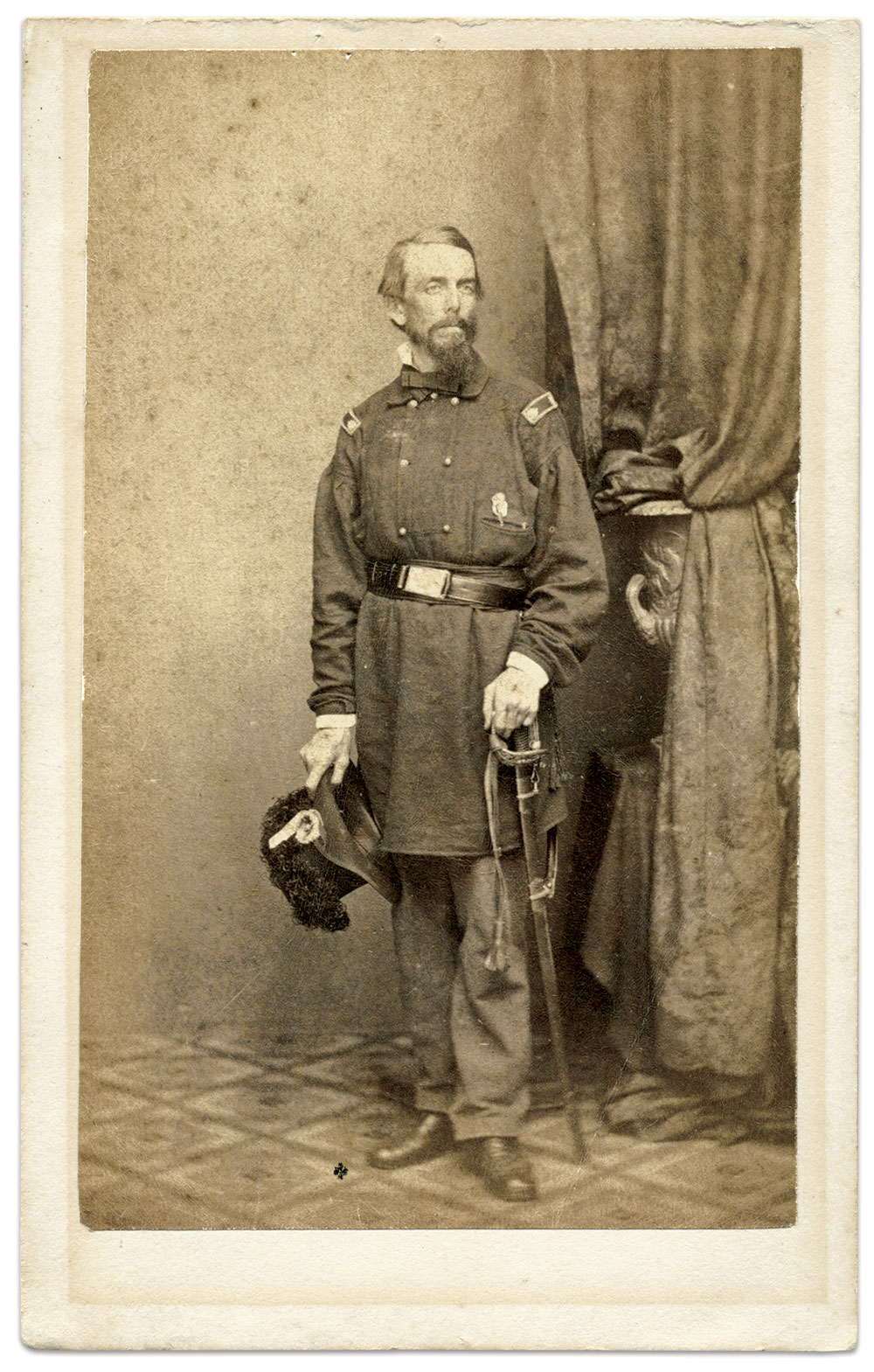
Missed Bull Run
Joseph Story Pitman, an 1839 Brown University graduate and lawyer, had raised a company of volunteers during the Mexican War, concluding his service in 1848 as major of the 14th U.S. Infantry. He became the lieutenant colonel of the Rhode Islanders in 1861, and led one group of 500 men to Washington (Burnside led the rest). Sent home on detached duty in June 1861, he missed Bull Run. He died in 1883 as a brigadier general in the state’s militia.

Carte de visite by Mathew B. Brady of Washington, D.C. Rick Carlile Collection.
Wounded as the Tide Turned
Jesse Comstock of Company D had a warm and affectionate personality that made him a favorite at Camp Sprague. He posed for this portrait in May 1861.
Two months later at Bull Run, Comstock suffered a wound just before the tide turned against Union forces. He landed in Sudley Methodist Church, which had been converted into a Union field hospital, and ultimately fell into enemy hands. The injury proved mortal. “It was with profound sorrow that we left him to a sad and lingering death. A few of our number, who had been captured, watched his last days,” noted the regimental historian. He died on July 31, 1861. His remains were brought home and buried in Providence. He was 18.

Saddle Maker
When the Newport Artillery Company formed in the early 1850s, the founding members included James Henry Chappell. An expert saddle maker, he closed up shop in April 1861 and joined his fellow militiamen to form Company F of the 1st. Chappell ranked as an ensign, or junior lieutenant. He posed for this portrait holding a Whitney revolver and a U.S. Model 1850 sword. He returned to Newport after the end of his three-month’s service and reopened his shop. Chappell went on to become a respected chiropractor and lived until 1914.

Carte de visite by Mathew B. Brady of Washington, D.C. Rick Carlile Collection.
Two Stints in Service
Providence jeweler George Frank Low wears the standard officer’s double-breasted uniform of the regiment. He served as a second lieutenant in Company A, and survived his three-months with the regiment. He came back a second time, from May to August 1862, as a captain in the 10th Rhode Island Infantry. He spent most of this period in relative safety inside the defenses of Washington. Low lived until 1905.

Carte de visite by Mathew B. Brady of Washington, D.C. Rick Carlile Collection.
Pall Bearer for a Fallen Colonel
On July 31, 1861, 10 days after the fighting at Bull Run ended, a funeral took place in Rhode Island for one of its brightest military stars, Col. John S. Slocum, who died in the battle. The original major of the 1st, he had left the regiment in May 1861 to become the colonel of the 2nd Rhode Island Infantry. In the solemn procession that accompanied the colonel’s body marched six pallbearers, all who had served with him in the state militia. The group included Col. Peter Simpson, Jr., of the Woonsocket Guards. Born in Canada, Simpson had moved to Woonsocket as a teenager and found work in the local mills. He later joined the Guards, and rose through the ranks to serve as its colonel. When the war began, the Guards were activated for duty in the 1st as Company K, with Simpson as captain. He commanded the company at Bull Run and garnered praise for his bravery. Simpson mustered out with his comrades a few days after Slocum’s funeral. He became a successful cotton mill owner, and died in 1889. His wife and two children survived him.

